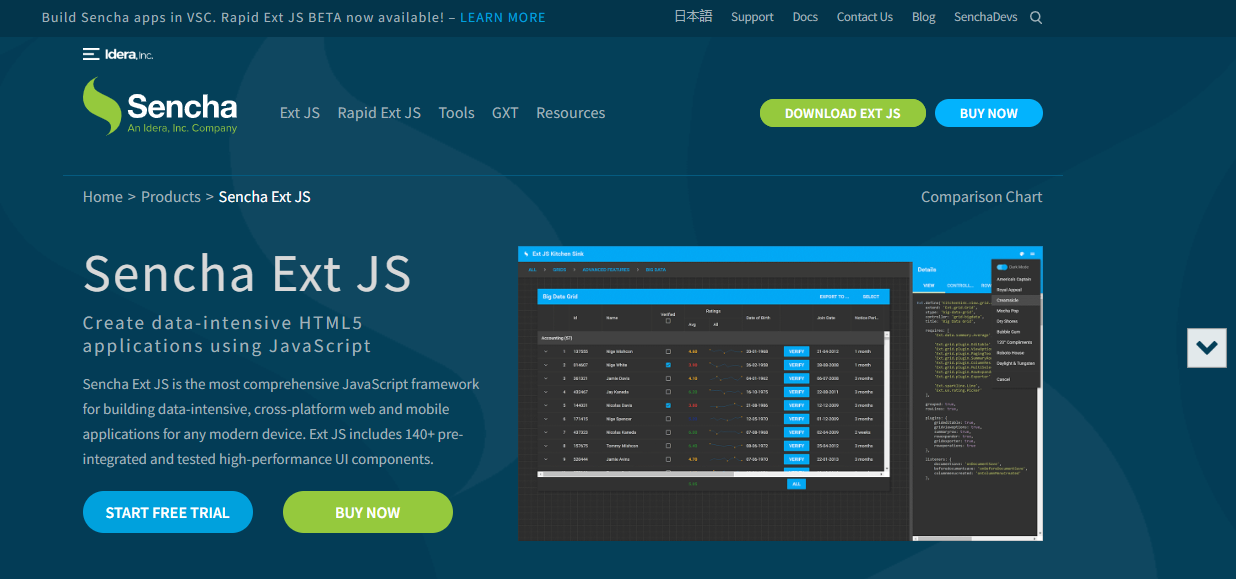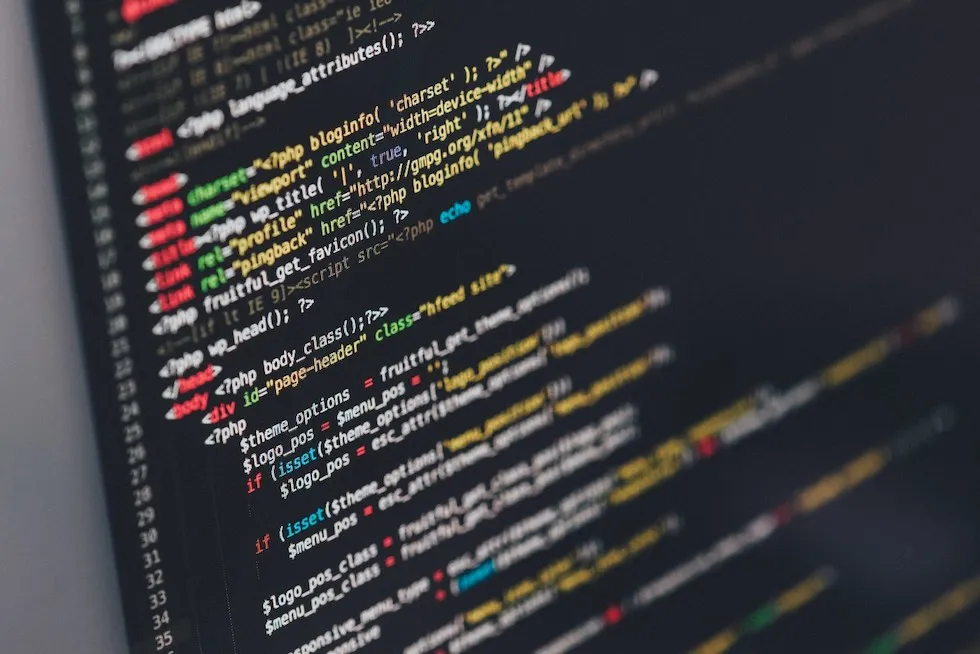Hello, fellow developers! Are you ready to start a new development journey? Front-end framework development is an excellent starting point for newcomers. That's why we have brought this blog to guide you through it step by step. Front-end framework development is like the artist of the web world. It's about creating the parts of a website that people see and interact with. If you've ever admired a beautifully designed website and wished you could make one, this guide is for you.
In this blog, we'll explain everything in simple terms, avoiding confusing tech talk. We'll start from the basics, like the concept of front-end development. Then, we will also introduce you to the frontend framework. One popular framework is Sencha Ext JS. Finally, you will help you learn how to become a pro developer.
By the end of this blog, you'll be well on your way to creating your web designs and maybe even considering a career in front-end development. So, let's begin this exciting learning adventure together!
What Is a Front-End Developer?
A front-end developer is a professional responsible for designing the interface users need to access an application. He ensures the design functions online using coding languages such as CSS, HTML, and JavaScript. It is important to note that front-end developers have also been participating in back-end development tasks recently.
As a final note, there are also full-stack engineers. They are full-stack developers with project management experience. They are also proficient in configuring, managing, and maintaining computer networks and systems.
What Is a Front-End Framework?
Front-end frameworks ease the tasks of front-end developers by providing them with ready-made solutions. They come with ready-made pieces of code that make it easier to build web pages. These pieces include things like text, colors, and interactive elements.
Imagine you're building a house with Lego bricks. Instead of making each brick from scratch, you have a set of pre-made Lego pieces. Front-end frameworks are like those pre-made Lego pieces for web developers.
Here is how frontend frameworks help us in multiple ways:
Frontend frameworks help us build websites faster by providing the basic structures (HTML, CSS, and JavaScript) we need.
We can also use them to ensure the web pages look good on devices like phones, tablets, and computers.
They ensure the web pages have a similar look and feel across the entire website.
They also save time by doing repetitive tasks automatically, like compressing and optimizing code.
So, front-end frameworks are like a handy toolbox that makes building websites faster and more organized.
Sencha Ext JS
Sencha Ext JS can help us make powerful websites and mobile apps that work on many devices. This amazing framework gives us over 140 ready-to-use, super-fast parts that make your apps look and work great.
Let's suppose that we are building a robot. Instead of starting from scratch, we have 140+ robot parts that are already put together. These parts include calendars, grids, and menus that make your app look and act fancy.
With Sencha Ext JS, you can make apps for multiple devices without redoing everything each time. It's like having a treasure chest of useful tools for building awesome apps that work everywhere.
How to Choose the Right Front-End Development Frameworks for Web Development Process?
When searching for the right front-end framework, you must look for some important factors. Let's break these considerations down into simpler terms:
Learning Resources
As you know, using a front-end framework always requires clear instructions and resources. Think of this as learning how to drive a car. A car isn't enough; we always need a driving instructor or a manual. Make sure that your chosen framework has many resources available online.
Core Features
Every car needs essential features like brakes, steering, and an engine to run smoothly. In the same way, when selecting a front-end framework, make sure it has the key features. It can help us build a secure and fancy web app.
Popularity
Think of popular frameworks like famous restaurants. The reason they're popular is because lots of people love them. Similarly, popular front-end frameworks have big communities of developers. This is great because you can easily find help if you get stuck.
Two-Way Data Binding
This is like having a phone conversation where both people can talk and listen simultaneously. Make sure that your chosen front-end framework has two-way data binding.
Imagine your favorite magician making a card disappear and then reappear. SSR is a bit like that magic trick but with web pages. It can make your web app load quickly and show up on people's screens faster, which is good for search engines.
Responsive Components
Like clothes in different sizes, your web app should look good on all sorts of devices, whether a tiny phone or a big computer screen. Your framework should help you with that.
Ease of Integration
You might need extra tools or gadgets to make your car cooler. Similarly, you might want to use other libraries for special tasks with web development. You must ensure that your framework is easy to integrate.
Security
You wouldn't want your car to be easily stolen, right? Well, the same goes for your web app. Make sure the framework you choose is known for being secure so you don't run into trouble down the road.
How to Become a Front-End Developer?
Here are the steps you should follow to become a front-end developer.
Learn CSS, JavaScript, and HTML
These coding languages are like the building blocks of the web and apps. Fortunately, learning all of these languages isn't too tough. There are plenty of online resources that can help us grasp these languages. If you want to go the extra mile, explore jQuery and JavaScript Frameworks.
Get Informed
Read articles and books about front-end development. Understanding how things work on a website will help you make sense of different coding languages. Watching YouTube videos can also enrich your learning experience.
Practice
As the saying goes, "Practice makes perfect." Start small by using your new knowledge to create user interface parts. If you make mistakes, don't fret; mistakes are valuable learning experiences.
Learn the Command Line
It's good to grasp basic concepts like navigating file systems when working with web design. Also, familiarize yourself with the Shell, a means of interacting with your computer's operating system using text commands.
Learn Version Control
Version control is crucial to prevent code from breaking when you make changes. Git is the most popular choice for this. It helps you track and manage code changes effectively.
Take a Course
Consider enrolling in a front-end developer course. Learning from experienced instructors in a structured environment can be highly beneficial. You can choose between physical classes or online courses, depending on your preferences.
Get an Internship
Becoming a junior front-end developer is an excellent way to gain practical experience. While the pay may be lower, you'll learn from experienced professionals. Plus, the entry requirements are often less stringent. Therefore making it an accessible option for beginners.
What Are Front End Developer Roles and Responsibilities?
Curious about the job of a front-end developer? Well, here's what they do in simpler terms:
1. Design and Structure: They decide how a webpage should look and be organized.
2. Enhance User Experience: They add cool features to make the website more enjoyable.
3. Balance Function and Looks: They ensure the website works well and looks nice.
4. Phone-Friendly: They ensure the design works smoothly on smartphones.
5. Reusable Code: They create code that can be used again in future projects, saving time.
6. Speed and Scalability: They ensure web pages load fast and can handle many visitors.
7. Markup Languages: They use different languages to build web pages.
8. Consistent Branding: They keep the website's style and look identical.
So, a front-end developer is like a website architect who plans how it should look, makes it fun to use, works well on phones, and keeps everything looking consistent. They're like the artists and builders of the web!
Final Thoughts
Starting your front-end development journey as a beginner is like setting off on an exciting adventure. Begin with the basics of HTML, CSS, and JavaScript to build a strong foundation. Practice by creating small projects to boost your confidence and skills. Gradually explore user interfaces, responsive design, and front-end frameworks.
Remember, learning takes time, and it's okay to face challenges. Stay motivated, use online resources, and ask for help from the developer community. With dedication and persistence, you'll unlock the door to creating amazing web experiences and maybe even start a fulfilling career in front-end development. Just keep learning and moving forward. Happy coding!
FAQs
What Is a Front-End Framework?
A front-end framework is a toolbox of ready-made code that helps developers build websites faster and more efficiently.
What Is the Most Commonly Used Front-End Framework?
The most commonly used front-end framework is React, known for its flexibility and popularity in web development.
Is HTML a Front-End Framework?
No, HTML is not a front-end framework. It's a markup language used to structure web content, while frameworks provide pre-built tools and structures for web development.
What Is a UI Framework?
A UI framework is a set of pre-designed elements and tools for creating user-friendly interfaces in web and app development.








